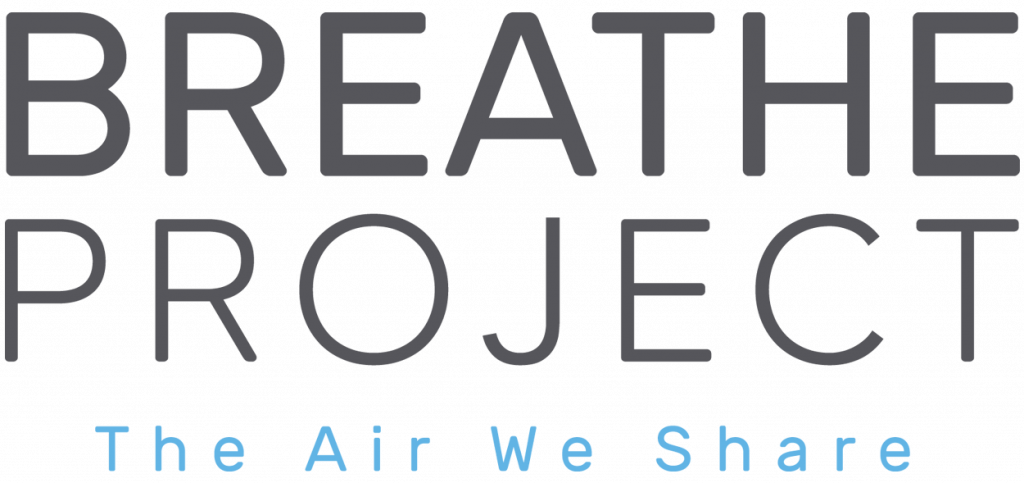Air Quality Resources

Breathe Project is a clearinghouse for information on air quality in Pittsburgh, southwestern Pennsylvania, and beyond. Learn more about the science and technology important to this issue and discover opportunities to take action on air quality.
Breathe Database: this excellent database of public health resources is sortable by keyword, topic, and region. Find information about everything from methane to climate change to asthma.

Indoor Exposure to Fine Particulate Matter and Practical Mitigation Approaches (Workshop)
The National Academies of Sciences, Engineering, and Medicine (NASEM) have published the proceedings of their January 26, 2022, workshop. Download the January Workshop.
Watch the recording of the 1/26/22 webinar by Dr. Richard Corsi:
1/26/22 Webinar by Richard Corsi (YouTube).
For more information about indoor particulate matter and related activities at the National Academies, visit:
EPA.gov: Indoor Particulate Matter
To view the video recordings of the indoor particulate matter workshops, please visit the following link and scroll to the bottom. The workshop dates are listed and videos can be found upon clicking a date and scrolling to the bottom of the page.

Indoor Air Quality (IAQ)
This EPA site offers a variety of resources focused specifically on indoor air quality. Learn about everything from air cleaners to climate change.
Tools for Schools
Poor air quality in a learning environment is linked to absenteeism, low test scores, and reduced productivity. With webinars and toolkits for both parents and educators, this page is dedicated to information about air quality in schools.
AirNow
The EPA’s AirNow tool allows users to enter a zip code, city, or state and get information about their air in real time.
EPA Federal Interagency Committee on Indoor Air Quality
The Committee on Indoor Air Quality (CIAQ) coordinates federal indoor air quality research and facilitates the exchange of information among governmental agencies. This page contains materials from CIAQ meetings, webinars on air quality, and more.
EPA.gov: Federal Interagency Committee on Indoor Air Quality
Air Topics
Broaden your understanding of air quality and its impact on health and the environment by exploring the EPA’s resources on topics such as CO2 pollution, radon, mold, transportation, and more.
Tools and Resources: Webinar Series
The EPA hosts free webinars on the third Wednesday of every month, 3:00–4:00 PM (ET), rotating through several key research areas. Check out upcoming webinars and look back through past webinars on the topic of air.
Tools and Resources: Training Webinar Series
These training webinars from the EPA are held bimonthly on the first Thursday of the month, 3:00–4:00 PM (ET), and touch on several important environmental research areas, including air quality. Attend a free training webinar or revisit past webinars to build your knowledge and skills.

The IAQ Radio project offers live and archived pieces on current, past, and future topics in IAQ. Episodes feature industry professionals and members of academia in interviews and discussions and cover a wide variety of topics relating to IAQ and restoration.
Episodes of Interest
- Episode 660: (04/08/22) Andrew K. Persily, PhD – Understanding Indoor CO2, Building Ventilation and their effects on IEQ
- Episode 659: (3/25/22) Don Fugler – IEQ Pioneers – Learn what Don Fugler was doing before ROCIS
- Episode 655: (02/25/22) J David Miller PhD – The Life and Times of an IEQ Founding Father – It is hard to run away from evidence – A history of indoor environmental quality
- Episode 646: (11/19/21) Richard Corsi, PhD, PE – University of California Davis –COVID & Accelerated IAQ Research to Practice – What we have learned
- Episode 614: (01/29/21) Francis “Bud” Offermann, MSME, PE, CIH – Ventilation, Air Filtration, Avoiding the Snake Oil Salesman
- Episode 604: (10/30/20) Kerry Kinney, Ph.D. – Professor, Civil Engineering – The University of Texas at Austin – The Microbiome – filter – dust forensics
- Episode 559: (09/27/19) Carl Grimes – Dust & Other Demons – Lessons from Hayward Score
- Episode 614: (01/29/21) Francis “Bud” Offermann, MSME, PE, CIH – Ventilation, Air Filtration, Avoiding the Snake Oil Salesman
- Episode 604: (10/30/20) Kerry Kinney, Ph.D. – Professor, Civil Engineering – The University of Texas at Austin – The Microbiome – filter – dust forensics
- Episode 559: (09/27/19) Carl Grimes – Dust & Other Demons – Lessons from Hayward Score
- Episode 437: (11/11/16) The Nexus of Energy Conservation & IAQ – ROCIS
- Episode 401: (2/12/16) Workshop on the Health Risks of Indoor Exposure to Particulate Matter
Health Impacts of Air Pollution

Indoor Air Quality & Exposure
The California Air Resource Board conducts and promotes research into the effects of indoor air quality and personal exposure. This page includes information about air cleaners, tips for improving IAQ, ARB programs related to air quality, and other resources on the topic.
School Health
This page offers links to information about the effects of air pollution on children’s health—including asthma concerns—as well as mitigation strategies.
Community Health Program
This page links to ARB research and programs that center on community health.

Indoor Air Pollution: Introduction for Health Professionals
This guide provides a handy summary of health symptoms, signs, and health effects for health professionals. Especially helpful are the quick reference table, organized by symptoms and pollutant class, and the questions for use in patient intake and medical history—use these tools to identify potential indoor and outdoor pollutant sources. This guide does not include some newer issues such as endocrine disruptor compounds and semivolatile organic compounds.
Co-sponsored by: The American Lung Association (ALA), The Environmental Protection Agency (EPA), The Consumer Product Safety Commission (CPSC), and The American Medical Association (AMA)
Indoor Air Pollution: Introduction for Health Professionals
(HTML and PDF versions available)
Children’s Health
Pediatric Environmental Health Specialty Units are located in all regions of the U.S. These units are available to answer questions from healthcare professionals, parents, school officials, or other community members about children’s symptoms that may be related to regionally specific environmental exposures, including exposures at schools. This link provides an interactive map detailing pediatric health by region.
EPA: Learn About Children’s Health Protection Where You Live

The Berkeley Lab’s Indoor Air Quality Scientific Findings Resource Bank looks at IAQ (especially in relation to health), examines remedial measures, and evaluates current knowledge on these issues. Useful for health and building professionals as well as the general public
The Berkeley Lab’s Indoor Air Quality Scientific Findings Resource Bank

The National Center for Healthy Housing is dedicated to providing the tools, data, and resources needed to ensure that everyone can live in a safe and healthy home. This website offers a wealth of information about housing policy, energy efficiency, lead contamination, IAQ, and children’s health.

Occupational Safety and Health Administration (OSHA)’s “Indoor Air Quality in Commercial and Institutional Buildings” guidance document provides practical recommendations that will help prevent or minimize IAQ problems in commercial and institutional buildings, and help resolve such problems quickly if they do arise.
Indoor Air Quality in Commercial and Institutional Buildings Guidance Document (PDF)
Air Quality, Public Health, and Urban Planning
Despite several decades of progress, outdoor air pollution in the Pittsburgh area remains a significant public health burden. Substantial efforts to make Pittsburgh more sustainable, economically vibrant, and socially just may also improve the region’s air quality. The following documents outline general planning guidance focused on such an alignment. Specific attention is also placed on (1) the intersections among public health, architecture, and air quality and (2) the health benefits of green space development.
These documents were prepared by ROCIS team member Norman Anderson, MSPH, Environment Public Health Consultant to the Heinz Endowments. Anderson collaborated with architects Sander Schuur, Linda Schuur, and Rik Ekstrom on the summary of the Stockholm-NYC conversation.

Comments and suggestions for improvement will be greatly appreciated:
